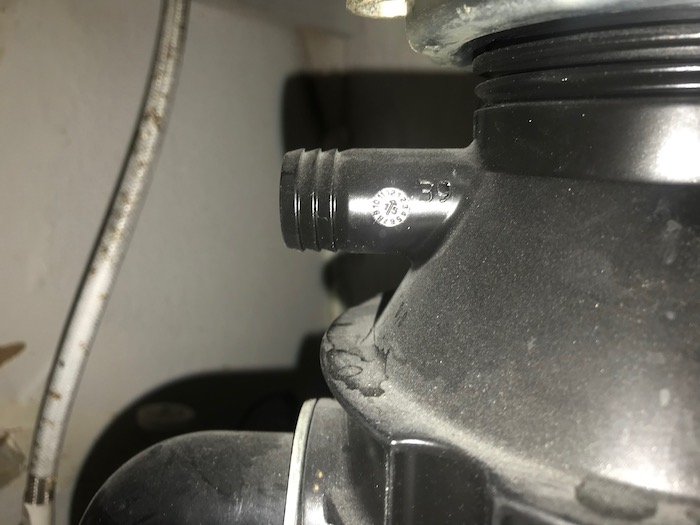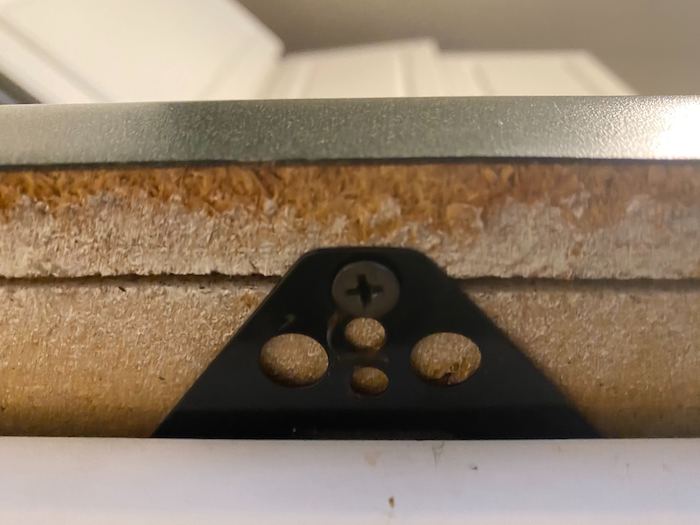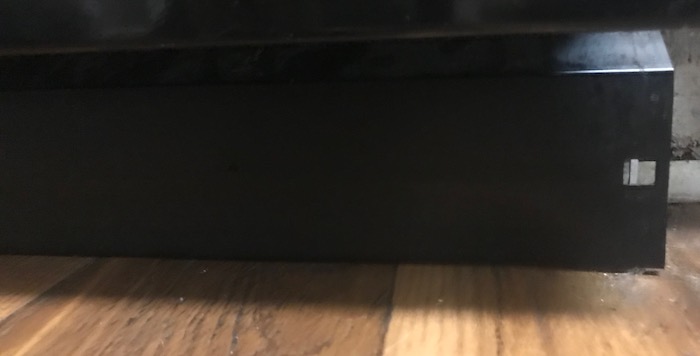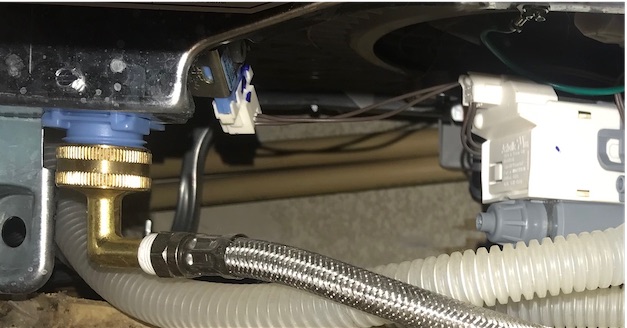
When your old dishwasher quits cleaning, it’s time to replace it with a newer one that’s more efficient. If you’d prefer to skip expensive uninstallation fees, you can save a ton of money when you learn how to remove an old dishwasher yourself.
Removing an used dishwasher is actually easier than you might think. All you need are a few tools and these helpful step-by-step instructions in order to successfully remove the old one so it can be picked up for appliance recycling once it is fully disconnected.
This guide is supplemental to the instructions that came with your old dishwasher. It’s always a good idea to consult a licensed professional and your manufacturer’s manual.
How to Remove a Built-In Dishwasher
**Click to auto-scroll by section
- Turn off the power
- Inspect the plumbing
- Turn off water at sink
- Remove water supply line
- Disconnect drain hose
- Detach unit from countertop
- Remove the lower panel
- Disconnect water supply
- Loosen front and back legs
- Test power with voltage meter
- Disconnect power from unit
- Remove dishwasher from counter
- Schedule dishwasher recycling services
Gather Tools Needed for Dishwasher Removal
The first part to complete any job, especially when removing a dishwasher is to have the right tools. Used dishwasher removal is so simple that it only requires three pretty common tools that you probably have in your toolbox.
In order to disconnect and remove your old dishwasher, you’ll need the following tools:

Voltage Meter
An inexpensive, wireless voltage meter should do the trick.

Four-in-One Screwdriver
For this project, we’ll be using Phillips and flatheads.
Adjustable Wrench
A crescent wrench will also work.
How to Remove Your Dishwasher in 12 Easy Steps
Follow these steps to successfully remove your old dishwasher:
1. Turn off the power
Since you’ll be working with electrical wires, it’s important to turn off the power to the dishwasher before you start. Most make it easy to figure how to disconnect a dishwasher, while others have more steps.
You should start by turning off the power to the dishwasher directly from your circuit box.
Locate your main breaker box. Find the circuit that powers the dishwasher and switch it off. Double-check your work by attempting to turn on the dishwasher. If nothing happens, you’ve found the correct circuit and can proceed to the next step.
Already too many steps? BOOK A REMOVAL PRO ❯

🔌 PRO TIP: If your used dishwasher still has power running to it after you’ve shut off the correct circuit, try shutting off the main switch. Keep in mind, this will power everything off in your entire home. If this doesn’t work, you should consult an electrician for help.
2. Inspect the plumbing under your kitchen sink
Clean out the area under your sink so you have easy access to the water lines. If you have a small space to work in, it might be beneficial to remove the cabinet doors to give you a little more room to work comfortably.
Since you’re working with water, it’s always a good idea to put a towel down under the kitchen sink to catch any water that may leak from the water supply line or drain hose. If you’re unsure about how to disconnect a dishwasher water line, don’t worry. We’ll get to that soon.
Locate your dishwasher’s water supply line. Inspect the water line for any leaks or corrosion. If the line is corroded, it needs to be replaced. You can purchase dishwasher water lines at your local hardware store.
🚰 PRO TIP: Water lines have multiple connection sizes as well as lengths, so if you accidentally buy the wrong one, it won’t fit. Bring the old one with you for reference.
Need an old dishwasher hauled away? BOOK A PICKUP ❯
3. Shut off the water at the sink
Locate the water shutoff valve that supplies your dishwasher’s water line. Turn it off by slowly twisting the knob clockwise until it stops. Be careful not to overtighten it, as it could break.

4. Remove the water supply line
Now that the water is off, you can safely disconnect the water supply line from the dishwasher. To do this, grab your wrench and turn the nut that connects the water supply line to the water valve counterclockwise.
5. Disconnect the drain hose
Your dishwasher’s drain hose runs from your machine to the drain of your kitchen sink and is usually connected to the garbage disposal. In some cases, it might be connected directly into a drainpipe under the sink.
Using a flat-head screwdriver, loosen the clamp around the hose, and then pull the drain line away from the garbage disposal. Set it on the towel to catch any remaining water.

6. Detach the dishwasher from the countertop
Open the dishwasher door and locate the two screws that hold your dishwasher to the countertop. Remove the screws using a screwdriver and set them aside.
Your dishwasher may be connected to the countertop using an installation bracket or more than two screws. If your dishwasher didn’t fit well upon initial installation, it could be bracketed to your countertop in a custom or “creative” way. Remove anything that secures it to the cabinet now.

7. Remove the lower panel
Most dishwashers have a lower panel that hides the water, drain and electrical connections. In some models, this panel may be at the top of your dishwasher.
Locate the panel and remove it from the dishwasher by unscrewing the two screws holding it in place. Pop off the panel to expose the power wires and water lines.

8. Disconnect the water supply
Now that the panel is off, you need to locate three things:
- Power supply: Yellow or white cord.
- Drain hose: A wide, flexible hose, usually clear or white. You may need to access this while pulling out your dishwasher out from under the counter.
- Water supply: A steel, copper pipe or flexible pipe.
Disconnect the water supply line by using your wrench to loosen the nut securing it to the dishwasher inside the panel. Use your fingers to unscrew it the rest of the way.
❗ NOTE: Don’t disconnect the power supply yet! We’ll move onto that in a few steps.

9. Loosen the front and back legs
Your dishwasher has four leveling leg screws located at each corner on the bottom of your machine. Using your wrench, loosen the front leg screws by turning them counterclockwise. Use your fingers to continue raising each leg until they’re both fully raised.
Place a towel or a piece of cardboard in front of the dishwasher so that it slides out easily without damaging your floor. Next, carefully slide your dishwasher out enough so that you’re able to access the rear legs.
Following the same process you just used for the front legs, raise the back legs up into the machine. This will allow you to fully slide your dishwasher away from the wall once you’ve disconnected the electrical wires.
10. Expose and test the wires for power
This is where your voltage meter comes in.
Working with electricity is incredibly dangerous. Even though you have already turned off the power to your dishwasher from the main circuit breaker, it’s crucial to double-check that there is no power still running to your dishwasher.
Using your voltage meter, test the exposed wiring under the panel. If there is no power running to your dishwasher, you can proceed to the next step.
⚡ WARNING: If your voltage meter beeps, stop working and call an electrician for help.

11. Disconnect the power from the dishwasher
Find the electrical box on your dishwasher and remove it to expose the wire nuts. Unscrew each wire nuts and pull the wires apart in this order: green, white, then black.
12. Remove the dishwasher from the counter
Now for the easiest part. With your dishwasher disconnected from the water, power and your countertop, carefully slide the dishwasher away from the wall until the unit is fully exposed.
💦 PRO TIP: The drain hose should also come out with the dishwasher during this step. If it catches, try feeding it through to the dishwasher from underneath your kitchen sink.
That’s it! You just saved a ton of money uninstalling your dishwasher yourself, and are ready to save even more on removal with LoadUp’s affordable dishwasher recycling services.

Professional Dishwasher Recycling Services
At this point you’ve probably figured out how heavy, bulky and awkward your old dishwasher is. Dishwashers typically weigh 150 – 175 pounds, have sharp edges and over the years tend to accumulate a lot of disgusting things like dust, grease, grime and even bugs, beneath it.
Could you imagine actually moving, lifting and hauling it to a recycling center or scrap yard yourself? Probably not. But with LoadUp’s premier nationwide dishwasher recycling services, you don’t have to. We recycle dishwashers of all shapes and sizes.
Regardless of your state’s dishwasher disposal or recycling rules, LoadUp makes it easier than ever to get rid of your old dishwasher in a legal and eco-friendly way for 20-30% less than the average cost for old dishwasher disposal, nationwide.
Need an appliance recycling pickup? BOOK ONLINE ❯
Our fully-licensed and insured Loaders will come into your home and expertly remove your used dishwasher with ease. Covered by our million dollar insurance policy, you can feel confident that both you and your home will be treated with respect and care.
Let us worry about all the heavy lifting, dishwasher haul away and proper disposal, so you don’t have to! With teams of local Loaders across the country, we can have your old dishwasher hauled away as soon as tomorrow.
Ready to experience our fast, courteous and efficient dishwasher recycling and disposal services? Book a pickup or get your no-obligation upfront quote online or you can give us a call at (844) 239-7711. One of our friendly customer services representatives will be happy to answer any questions you have, provide you with a quote or help you schedule a pickup.
📓 Want to learn more about appliance disposal? Check out our Appliance Disposal Guide.
Related Articles from the Trash Talk Blog:

